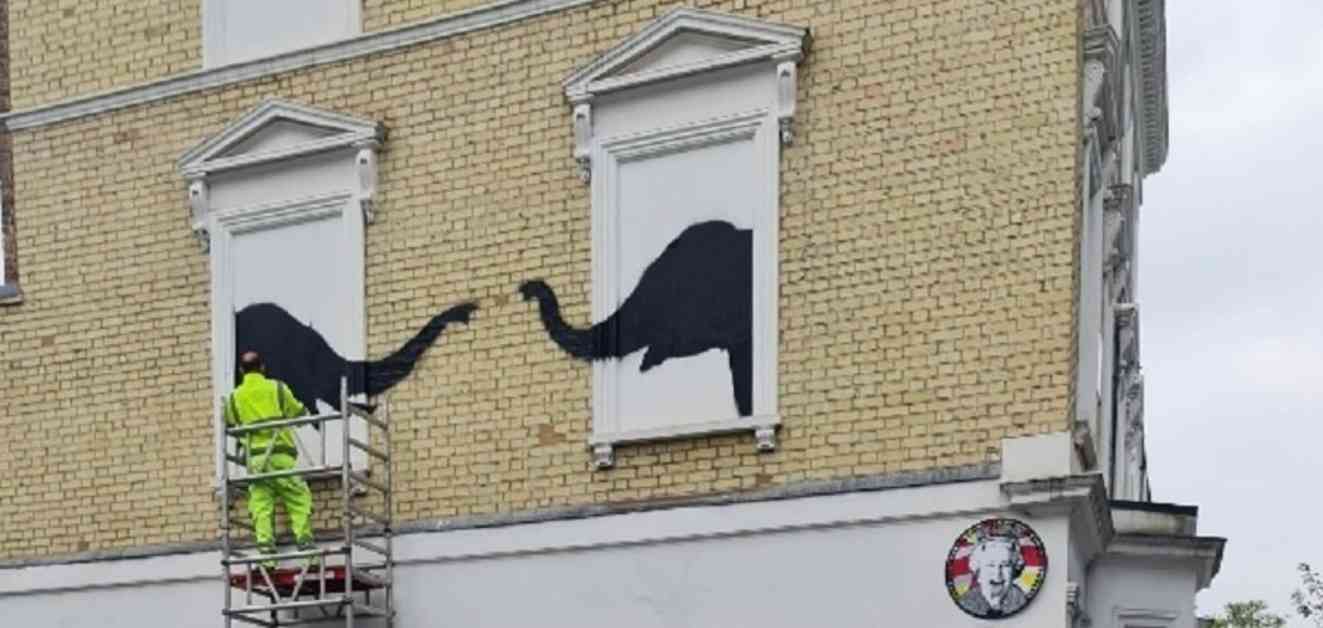Banksy’s ‘Chelsea Elephants’ Artwork Restored with Anti-Graffiti Solution
A beloved Banksy mural in Chelsea has been restored and protected with an ‘anti-graffiti solution’ after it was vandalized shortly after its unveiling. Located on Edith Terrace, the artwork features two elephants peeking out of blocked-out windows, showcasing Banksy’s signature style and creativity. Unfortunately, within two weeks of its installation, the piece was defaced with white stripes, prompting Kensington and Chelsea council to take action.
Restoration Efforts by the Council
On a Friday, council workers diligently cleaned the defaced artwork, carefully removing the unwanted white lines and applying a special coat of ‘anti-graffiti solution’ to shield it from future vandalism. This proactive approach by the local authority demonstrates their commitment to preserving public art and maintaining the cultural heritage of the borough. The cost of the cleanup has not been disclosed, but the council’s swift response to the vandalism is commendable.
Councillor Josh Rendall of Stanley ward, where the mural is situated, expressed his delight at Banksy’s contribution to the borough’s cultural landscape. He emphasized the importance of protecting and cherishing such unique artworks for the enjoyment of residents and visitors alike. The restoration of the ‘Chelsea Elephants’ piece reflects the community’s appreciation for street art and its ability to enrich public spaces.
Wood Street Walls and the Impact of Street Art
Mark Clack, a representative from Wood Street Walls, a creative art organization collaborating with street artists, highlighted the positive impact of street art on local communities. Many local authorities, including Kensington and Chelsea council, have embraced street art as a means of revitalizing urban areas and attracting visitors. Clack emphasized the role of councils in preserving and safeguarding street art within their jurisdictions, citing the importance of supporting and fostering the creative community.
Wood Street Walls’ involvement in protecting Banksy’s artwork in Walthamstow demonstrates their commitment to preserving cultural assets and promoting artistic expression. By investing in safe spaces for artists to create, councils can not only deter vandalism but also encourage the growth of the creative economy. Clack emphasized the value of strategic investments in public art initiatives, which can enhance the aesthetic appeal of neighborhoods and stimulate economic activity.
Future of Public Art in Kensington and Chelsea
The restoration of Banksy’s ‘Chelsea Elephants’ mural serves as a testament to the enduring legacy of street art and its impact on local communities. As councils continue to recognize the value of public art in enriching urban spaces, initiatives to protect and promote artistic expression will play a crucial role in shaping the cultural identity of boroughs like Kensington and Chelsea. By engaging with artists, organizations, and community stakeholders, local authorities can foster a vibrant and inclusive artistic environment that benefits residents and visitors alike.
Conclusion
In conclusion, the restoration of Banksy’s ‘Chelsea Elephants’ artwork in Chelsea is a tribute to the historic beauty and cultural significance of street art. Through collaborative efforts between councils, organizations, and artists, public art can thrive and contribute to the vitality of urban landscapes. As we celebrate the resilience and creativity of street artists like Banksy, let us also recognize the importance of preserving and protecting their works for future generations to enjoy.












